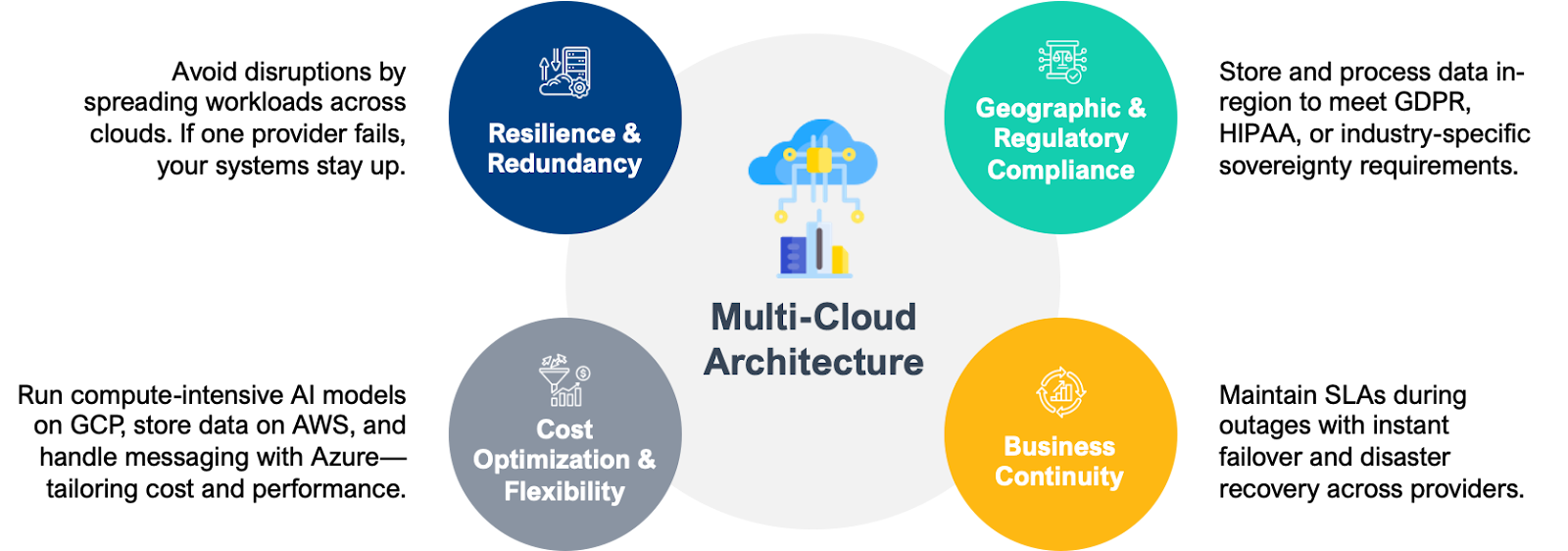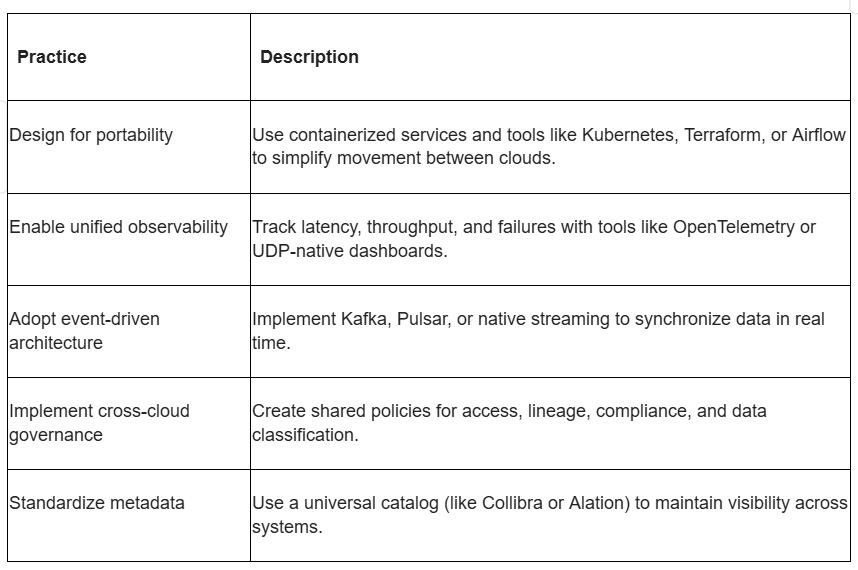Multi-Cloud Data Strategies: Building Flexibility and Redundancy with Unified Data Platforms
August 6, 2025
9 min. reading time
In today’s digital economy, data is the lifeblood of personalized experiences, operational efficiency, and competitive innovation. But as cloud environments grow more complex—and downtime less tolerable—relying on a single cloud provider has become a liability.
That is why more enterprises are adopting multi-cloud data strategies—deploying their data platforms across two or more cloud providers to maximize resilience, compliance, and flexibility. And they are doing it with modern frameworks like the Unified Data Platform (UDP) and Customer Data Platforms (CDPs) that bring real-time, cross-cloud insights into a single view.
What Is a Multi-Cloud Data Strategy?
A multi-cloud data strategy intentionally distributes data workloads across multiple cloud providers—such as AWS, Azure, Google Cloud, and Snowflake—to avoid vendor lock-in, improve uptime, and optimize performance.
But it is more than just splitting storage. A mature strategy includes:
- Real-time data replication
- Cloud-agnostic orchestration
- Distributed query execution
- Integrated governance and observability
- Unified data models across clouds and regions
It is the next logical step in the evolution of the modern data platform—from siloed systems to fully integrated, real-time data ecosystems.
Why Enterprises Are Embracing Multi-Cloud Architectures

The Role of a Unified Data Platform (UDP) in Multi-Cloud
A Unified Data Platform connects data pipelines, governance, storage, and analytics into a single real-time layer—regardless of where your data lives. It’s the glue that turns a fragmented multi-cloud setup into a synchronized, intelligent environment.
Key traits of a modern UDP in a multi-cloud setup:
- Cloud-agnostic orchestration
- Real-time data ingestion and replication
- Centralized IAM and role-based access
- Unified data catalogs and lineage tracking
- Support for edge and hybrid architectures
Kloud9 designs UDPs that unify data across Snowflake, Redshift, BigQuery, and Lakehouse ecosystems—delivering query-anywhere functionality without fragmentation.
Customer Data Platforms (CDPs) in a Multi-Cloud World
A Customer Data Platform activates real-time, cross-channel customer insights by stitching together behavioral and transactional data.
In multi-cloud environments, modern CDPs:
- Ingest data from CRMs, mobile apps, websites, and marketing platforms
- Normalize identity and unify customer profiles
- Integrate with personalization engines and AI models
- Respect regional data laws like GDPR and CCPA
- Operate with sub-second latency, no matter the cloud
A multi-cloud CDP ensures your personalization strategies scale globally—without sacrificing compliance or performance.
Challenges of Multi-Cloud (and How to Solve Them)
While the benefits are significant, multi-cloud data strategies introduce complexity. Here are key challenges and how Kloud9 helps address them:
1. Data Consistency and Synchronization
Without careful planning, data can drift or conflict between systems.
✅ Kloud9 solves this with real-time replication pipelines, change data capture (CDC), and schema versioning tools.
2. Security and Governance
Managing policies across clouds can become chaotic.
✅ We implement centralized IAM, encryption standards, and automated compliance monitoring across all platforms.
3. Cost Control and Optimization
Sprawling workloads can lead to unpredictable bills.
✅ Kloud9 helps optimize compute, storage, and data movement costs across environments with intelligent workload placement and observability.
4. Operational Complexity
Multiple clouds mean multiple interfaces, tools, and SLAs.
✅ Our approach standardizes orchestration, monitoring, and alerting—regardless of provider.
Best Practices for Deploying Multi-Cloud Data Platforms
To get multi-cloud right, enterprises should follow these principles:

Flexibility Is the Future
As data becomes more global, real-time, and AI-driven, multi-cloud strategies are not optional—they’re essential. Enterprises that prioritize flexibility, redundancy, and unified access will outpace those stuck in monocloud environments.
By embracing a Unified Data Platform or real-time Customer Data Platform, your organization can scale smarter, innovate faster, and make data your competitive edge—across any cloud.
Ready to modernize your data strategy?
Let Kloud9 help you build a resilient, intelligent platform—wherever your data lives.



